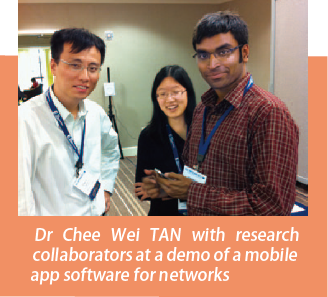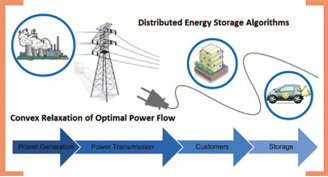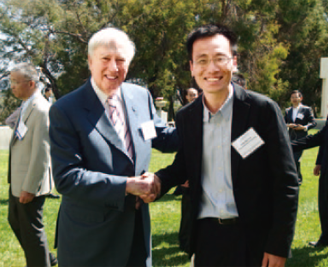Envision the possibility that smart electric cars cruise carefreely on the
streets without worrying the batteries running out of juice. During hot
summer days when air conditioners are running at the maximum, the
electric utility can quickly balance supply and demand, shuffle and smooth
the load to deliver power efficiently to the millions of households. The first
scenario is a system of smart mobile batteries, while the second is a smart
power system. What if we could connect the two? These benefits could be
realized by technologies developed in the smart electric power grid (Smart
Grid). Indeed, a key challenge is to control and optimize the Smart Grid
network. An interconnected system of hundreds of millions of electric cars
introduces rapid, large, and random fluctuations in power supply and
demand, voltage and frequency. Such deployments create stronger
demands and highly variable (in time and space) operating conditions than
those experienced in current networks. With energy storage, how should
power flow be optimized and control to maximize efficiency and minimize
power consumption cost?

This project helps to realize
the vision of Smart Grid by
addressing several fundamental
challenges. First, the physics of
power flow make these power
flow optimization problems
extremely hard to solve as they
are nonlinear and non-convex
optimization problems. Second,
the power flows become less
predictable and the network now has to adapt to the network users (including
electric vehicles) instead of the other way around. Using rigorous mathematical
analysis, we have made significant contributions to overcome the bottleneck
problem of non-convexity in a distributed manner. In other words, we want
to "convexify" and "decompose" the original non-convex problem to find
exact global solutions. This is mathematically challenging because it is known
that convex relaxation does not provide global solutions of the original
problem. Our mathematical techniques using differential topology and convex
relaxation are very promising because they can guarantee global solutions
and the development of faster distributed control algorithms.
|
|

Distributed Energy Storage Algorithms
In addition to overcoming this notorious non-convexity barrier, our theory-inspired
approach also highlights the importance of network connectivity for energy storage and electric vehicle charging. We show that there are clearly benefits in a joint optimization of energy storage and the power flow. Energy storage at demand buses can absorb the transients while the power loads are rebalanced. When the power price is low, energy can be stored in electric vehicle batteries. On the other hand, when the power price is high, users can first draw energy locally from the electric vehicle batteries before consuming the energy directly from the power grid network. The electric vehicle batteries
play an interestingly dual role: they represent a new type of demand load to
be managed and also as new energy storage resources (when power flows
from the vehicle to grid) for smoothing the aggregate load in the system. This
dual role can be realized by our distributed control algorithms in the Smart
Grid and mobile computing software that run on wireless communication
networks. The research innovations in this project have immense scientific
value and have been published in top-tiered journal publications (the IEEE
Transactions on Power Systems, the IEEE Journal of Selected Topics in Signal
Processing and the IEEE Journal on Selected Areas in Communications).
Research into this joint flow and charging dynamic control and optimization
has led to various collaborations around the world. Together with the
California Institute of Technology (Caltech) and a Californian utility, we have
studied how the power flow optimization and distributed control algorithms
can be used for experimentation on a power microgrid installed on Catalina
Island located southwest of Los
Angeles, California. The impact of
this project is even larger on its
applicability to modern electric
power smart grids as the society's
reliance on sustainable energy
continues to expand tremendously.

Dr Chee Wei TAN with President Daniel MOTE of the National Academy of Engineering at the 2015 China-America Frontiers of Engineering Symposium
Dr Chee Wei TAN
Department of Computer Science
City University of Hong Kong
cheewtan@cityu.edu.hk
|
